Video of the Week:
Butterfly Gardens
Fruit:
Fertilizing Blueberries
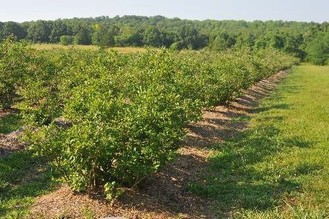
Year of Planting: Apply fertilizer according to soil test and work into the soil before planting. Every six weeks thereafter apply a high nitrogen fertilizer such as a 27-3-3, 29-5-4, 30-3-3 or something similar. Though recommended for lawns, these fertilizers will also work well for blueberries as long as they do not contain weed killers or crabgrass preventers. Apply 1 teaspoon per plant within a circle within 12 inches of the plant. Do not apply fertilizer past August 15. Urea (46-0-0) may be substituted for the fertilizer recommended above but cut the amount to a rounded ½ teaspoon per plant.
Second Year: Double the rates recommended above and increase the area treated to within 18 inches of the plant. Apply the first application when the new growth appears in the spring and continue every six weeks but not after August 15.
Third Year and Following: Apply 1/3 cup of the fertilizer recommended above within three feet of each plant when growth begins in the spring. Bushes should produce 6 to 12 inches of new growth each year. If less than this is produced or if you wish larger plants, apply 1/4 cup of fertilizer every 6 weeks. Do not apply fertilizer after August 15. (Ward Upham)
Controlling Weeds in Strawberries
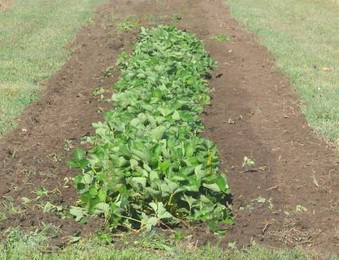
Although there are no weed preventers available for homeowners to use on strawberries, Poast (sethoxydim), a grass-killing herbicide, can be used after weedy grasses have emerged. It can be sprayed directly over strawberries without harm but should not be applied within 7 days of harvest. You can find Poast in Fertilome Over the Top II, Hi-Yield Grass Killer and Monterey Grass Getter. (Ward Upham)
Vegetables:
Help for New Vegetable Gardeners
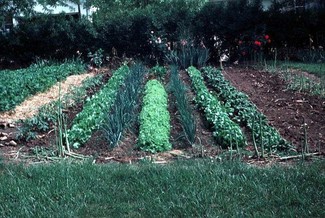
Another, more in-depth publication titled the “Kansas Garden Guide” is also available. This 77-page booklet has sections on planning a garden, composting, improving soil, seeding and planting, garden care, watering, planting gardens for fall production, insect and disease control, container gardening, season extension and harvesting and storing. This is followed by an extensive section on how to grow specific vegetables and herbs. You may order the print publication at http://www.ksre.ksu.edu/bookstore/Item.aspx?catId=534&pubId=8219 This web page also provides a link to a free PDF copy of the same publication. If you don’t know the location of your county extension office, see http://www.ksre.ksu.edu/Map.aspx (Ward Upham)
Turfgrass:
Controlling Wild Violets in Lawns
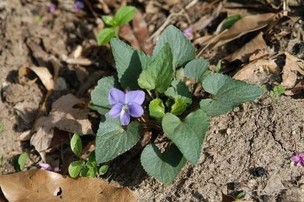
Both products listed above are labeled for tall fescue and Kentucky bluegrass. Do not use products containing triclopyr on bermudagrass as severe injury will occur. Weed-B-Gon Chickweed Clover & Oxalis is labeled for buffalograss and zoysia (Turflon Ester is not) but lawns will likely show some temporary browning after application.
Spray only on calm days and when temperatures are below 90 degrees to avoid damage to nearby plants. (Ward Upham)
Pests:
Ash/Lilac Borer
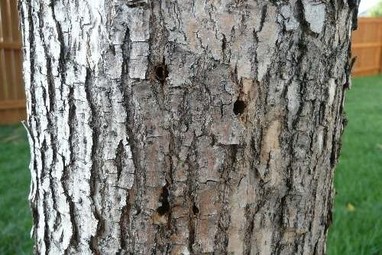
If you have had problems with canes or stems of lilac and privet suddenly wilting, or ash trees that show borer holes in the trunk and larger branches, the ash/lilac borer may be to blame. This insect causes the base of infested lilac stems to swell and the bark to separate from the wood. A fine sawdust-like material is present around holes in the canes. Ash and mountain ash also are affected. The borer attacks the trunk, which may cause bark to swell and crack if there are repeated infestations.
Ash/lilac borers overwinter as larvae in infested trees and shrubs. Moths generally begin to emerge in mid to late April. Emergence peaks in May, dwindles by mid to late June and ends by the first week of July. However, this varies by year. The moth has clear wings and resembles a wasp. There is one generation per year.
Public and commercially managed properties often use pheromone traps to determine the presence of adults. Spray treatments are started seven to 10 days after capture of the first moths.
Sprays also can be timed using phenology, the practice of timing one event by another. The first spray for ash/lilac borer should be applied when the Vanhoutte spirea is in full to late bloom. This is often about the third week in April but can be as early as late March and as late as mid-May. Apply a second spray four weeks after the first. To see a photo of Vanhoutte spirea, go to: http://plantsci.missouri.edu/ps2210/list9/spix_van.htm .
Thoroughly treat the trunk and larger limbs of ash or the lower portion of the stems of lilac or privet. Heavily infested ash should be cut and burned during the fall and winter. Infested stems of lilac or privet should be removed as well.
Bifenthrin or permethrin (Hi-Yield Garden, Pet, and Livestock Insect Control and 38 Plus Turf, Termite and Ornamental Insect Control) are labeled for control. Though there are a number of homeowner products that contain one or the other of these two active ingredients, the permethrin products listed above are the only ones I've found that specifically lists the ash/lilac borer on the label with directions for control. (Ward Upham)
Mole Control
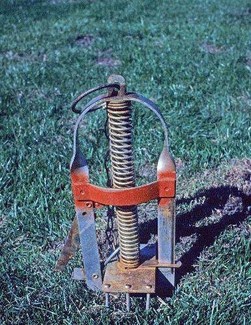
Numerous home remedies have been concocted to control moles including chewing gum, noisemakers, broken glass, bleaches, windmills, and human hair. None have been found to provide consistent and reliable control. Poison baits also fail to work because moles feed on earthworms and grubs, not vegetable matter. Even grub control products are ineffective as they do not control earthworms, and earthworms are the primary food source for moles.
The best control method is the use of traps. There are three types of traps (harpoon, choker, and scissor-jawed) and each can be effective but may take some time to master. Try the following suggestions.
Moles use some tunnels more than others. Use a broomstick or something similar to poke holes in a number of runs. Check a day later to see which runs have been “repaired.’ These are the active runs and should be used for trap placement.
Place a trap in an active run by excavating soil, placing the trap and then replacing loose soil. Secure the trap so that the recoil will not lift the trap out of the ground. Make sure the triggering mechanism is in the center of the run.
Finally, push down two more holes, one on each side of the trap. Moles should be caught when they try to repair the tunnel. Move traps if no moles are caught within three days.
For more information as well as “How-to” videos, see http://www.wildlife.k-state.edu/species/moles/index.html (Ward Upham)
Butterfly Gardening
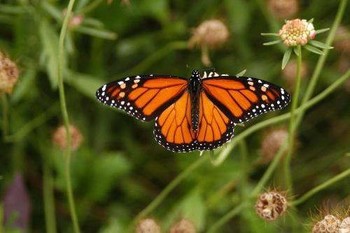
However, different species of butterflies prefer different plants. Using a variety of plant material that vary in blooming times of day and year helps attract a diverse group of visitors. Plant groups of the same plant together; a single plant is
difficult for a butterfly to detect. If trying to attract a certain species of butterfly, learn which plant(s) that butterfly prefers, and then emphasize that plant in your planting. Annuals that attract butterflies include ageratum, cosmos, French marigold, petunia, verbena and zinnia.
Perennials and shrubs can be split into those that bloom early, mid-season and late. Good choices for those that bloom early are allium, chives, forget-me-not and lilac. Bee balm, butterfly bush, black-eyed Susan, buttonbush, butterfly weed, daisy, daylily, gaillardia, lavender, lily, mint, phlox, privet, sunflower and veronica are fitting picks for mid-season bloom. Late bloomers include aster, glossy abelia and sedum.
There are other things you can do to encourage butterflies. Butterflies are cold-blooded and like open areas where they can sun themselves on cool days and shade to cool off when the sun is too intense.
Butterflies also need water. A simple way to make a butterfly pool is to take a bucket, fill it with gravel, and bury it to the rim. Now add water, sugar water or sweet drinks so that the butterflies can land on the gravel but still reach the liquid.
Our Johnson County Master Gardeners have put together a fact sheet on creating a butterfly habitat here. (Ward Upham)
Contributors: Ward Upham, Extension Associate
 RSS Feed
RSS Feed
